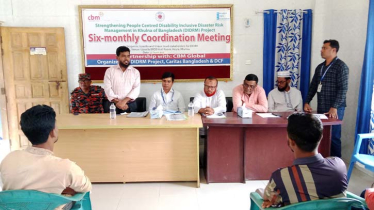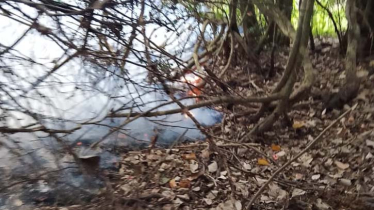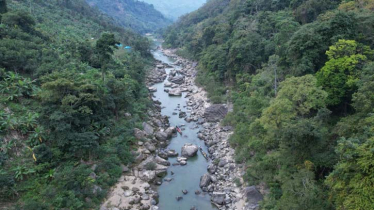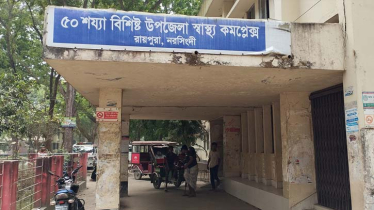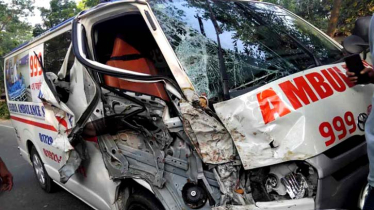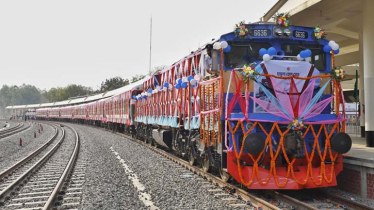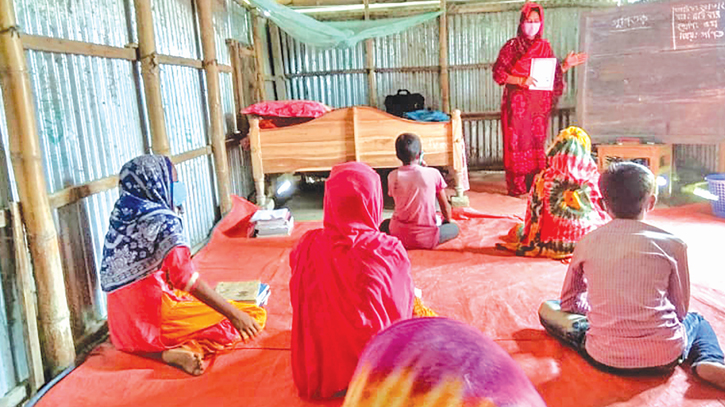
Factors like poverty, limited awareness among parents in the char area, difficult transportation systems, and early marriages also contribute to high dropout rates. PHOTO : TDM
As per multiple sources, approximately 30-40 percent of students residing in the Char region of Gaibandha face challenges securing admission to secondary and higher secondary schools due to various hindrances. Moreover, 70 to 75 percent of those who do manage admission struggle to pass the higher secondary level. The primary factor behind this predicament is natural disasters such as floods and river erosion. Alongside this, factors like poverty, limited awareness among parents in the Char area, difficult transportation systems, and early marriages also contribute to the issue.
A case in point is Emon Mia, a young lad from Durgam Char in Phulchari Upazila, Gaibandha, aged just 12. Emon rises early each morning, rushing to the Brahmaputra with a fishing net.
His daily catch of fish barely sustains two meals. From noon until evening, he aids his parents in their tasks, bypassing primary education due to the local educational crisis, diving headfirst into the trials of life. Emon's story is emblematic of the grip that uncertainties have taken over countless children's futures in the Char region.
A closer examination reveals the fragile state of the education system in Gaibandha's Char area. The difficulties faced by the residents have deep roots, particularly within the realm of education. Despite being enrolled in the same curriculum as those in the plains, Char students lag behind their counterparts in terms of educational attainment. A staggering 50 percent of students fail to progress past primary school.
In this setting, girls often enter early marriages before reaching secondary school, while boys are pushed into various professions by familial pressures to contribute financially. The area's schools remain shut for two to three months annually due to flooding and erosion. The absence of online learning options, coupled with limited financial resources and knowledge access, further hampers educational continuity.
Hafsa Khatun, a 14-year-old girl from Kunder Para Char in Gaibandha Sadar Upazila, recounted halting her education after completing the fourth grade due to the lack of educational institutions. Although there's a primary school close by, secondary and higher secondary schools are absent. Gaibandha's district education office reports 116 primary schools, 9 secondary schools, and 3 secondary-level madrasas in the Char area and those connected to the plains. However, student attendance remains irregular.
The communication barriers make it arduous for families to afford enrollment in educational institutions on other chars or in the city. Parents have to pay between Tk 50-100 per day based on their financial capacity. Only those well-off parents can send their children to residential hostels or boarding houses in the city.
Despite a substantial population, Char lacks a single technical education institution. Annual floods destroy school premises and infrastructure, rendering them unsuitable for education.
In addition to natural perils, a longstanding challenge in these remote areas is the shortage of qualified teachers. The vast distances between the pastures and the flat lands make it a formidable task for teachers to navigate rivers and streams, leaving them drained by the time they reach the students.
Khalilur Rahman, the Principal of Gaibandha Government College, commends the talents of many Char students. He has noticed several students from Gaibandha Char excelling in renowned educational institutions across Bangladesh. With the government's commitment to advancing education for all, it's hoped that special measures will be taken to ensure children and adolescents in the Char area receive comprehensive access to education.
TDM/SD

